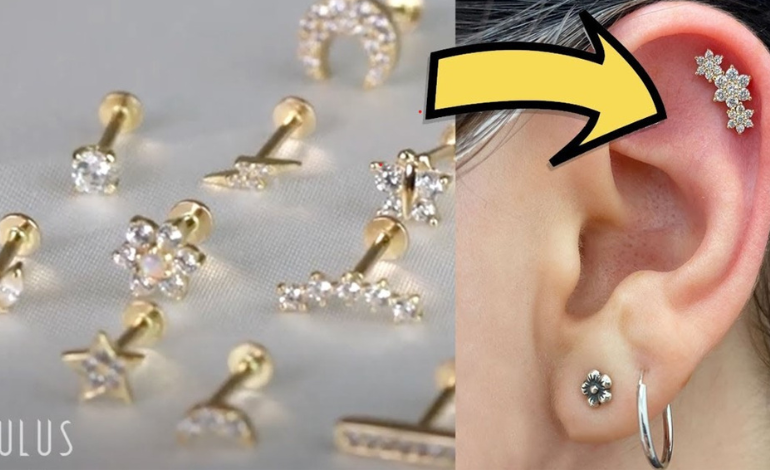Nose rings have been a popular form of body adornment for centuries, tracing back to ancient civilizations and spanning various cultures. Today, they continue to be a stylish and expressive accessory, embraced by people of all ages. This comprehensive guide will delve into the world of nose rings, covering their history, styles, materials, and care tips to help you make an informed choice.
The History and Cultural Significance of Nose Rings
Nose rings have a rich history and cultural significance across different regions:
Ancient Middle East: The practice of nose piercing can be traced back to around 4,000 years ago in the Middle East. It is mentioned in the Bible, where Abraham’s servant gave Rebekah a nose ring.
Indian Subcontinent: Nose rings have been part of Indian culture for centuries. They are often associated with marriage and fertility, worn by brides as a symbol of their marital status. The left nostril is traditionally pierced, as it is believed to be connected to reproductive organs in Ayurvedic medicine.
African Tribes: Various African tribes also have traditions involving nose rings. Among the Berber and Beja tribes, nose rings signify wealth and status.
Western Popularity: In the 20th century, nose rings gained popularity in Western cultures, first among the hippie movement in the 1960s and later as a symbol of rebellion in the punk rock scene of the 1970s and 1980s. Today, they are widely accepted as a mainstream fashion accessory.
Styles of Nose Rings
Nose rings come in various styles, each offering a unique look and catering to different preferences:
Nostril Studs
Nose Hoops
Nose hoops are circular pieces of jewelry that wrap around the nostril. They come in different diameters and thicknesses, allowing for a customizable fit. Nose hoops can be simple and minimalist or adorned with decorative elements for a bolder look.
Septum Rings
Septum rings are worn through the septum, the cartilage between the nostrils. They can be in the form of a circular ring, a horseshoe-shaped barbell, or a clicker with a hinge for easy insertion and removal. Septum rings are versatile and can be flipped up inside the nose for a more discreet look when needed.
L-shaped Nose Pins
L-shaped nose pins have a straight post with a 90-degree bend at the end, forming an “L” shape. This design helps keep the jewelry securely in place. They are easy to insert and remove, making them a convenient option for everyday wear.
Nose Screws
Nose screws have a twisted post that screws into the piercing, providing a secure fit. The twist helps prevent the jewelry from falling out, making it a practical choice for active individuals.
Materials for Nose Rings
Choosing the right material for your nose ring is crucial for both aesthetics and health. Here are some common materials used for nose rings:
Titanium
Titanium is a top choice for nose rings due to its hypoallergenic properties. It is biocompatible, reducing the risk of allergic reactions and promoting faster healing. Titanium is also lightweight and durable, making it comfortable for long-term wear.
Surgical Steel
Surgical steel is another popular material for nose rings. It is durable and resistant to tarnishing. However, it may contain trace amounts of nickel, which can cause allergic reactions in sensitive individuals.
Gold
Gold nose rings offer a luxurious and timeless look. It’s important to choose high-quality gold (14k or higher) to ensure it is suitable for piercings. Lower karat gold can contain other metals that may cause irritation.
Niobium
Niobium is similar to titanium in terms of biocompatibility and hypoallergenic properties. It is also lightweight and available in a range of colors, making it a versatile choice for nose rings.
Bioplast
Bioplast is a flexible, biocompatible plastic often used for initial piercings and those prone to metal allergies. It is comfortable to wear and can be easily trimmed to fit.
Getting a Nose Piercing
If you’re considering a nose piercing, it’s important to know what to expect during the procedure:
Consultation: Discuss your piercing goals and concerns with a professional piercer. They will assess your nose anatomy and recommend the best placement and jewelry options.
Sterilization: The piercer will sterilize the equipment and the area of your nose to prevent infection.
Marking: The piercer will mark the exact spot for the piercing to ensure proper placement.
Piercing: Using a sterile, hollow needle, the piercer will create the hole and insert the nose ring. The process is quick and relatively painless, though you may feel a brief pinch.
Aftercare Instructions: The piercer will provide aftercare instructions to help you care for your new piercing and promote healing.
Aftercare Tips for Nose Rings
Proper aftercare is essential for the healing of your nose piercing. Here are some tips to follow:
Clean Regularly: Clean the piercing twice a day with a saline solution or a piercing-specific cleaner. Avoid using alcohol or hydrogen peroxide, as these can be too harsh.
Avoid Touching: Refrain from touching the piercing with dirty hands to prevent introducing bacteria.
Avoid Makeup and Skincare Products: Keep makeup and skincare products away from the piercing area to prevent irritation and infection.
Be Mindful of Clothing: Be cautious when putting on or taking off clothing to avoid snagging the jewelry.
Monitor for Infection: Watch for signs of infection, such as excessive redness, swelling, or discharge. If you suspect an infection, seek advice from your piercer or a healthcare professional.
Styling Your Nose Ring
One of the best aspects of nose rings is the ability to style them in various ways. Here are some ideas to consider:
Mix and Match: Combine different styles of nose rings, such as a nostril stud with a septum ring, to create a unique look.
Color Coordination: Choose nose rings that match or complement the colors of your other jewelry or outfits.
Layering: Pair your nose ring with other facial piercings for a cohesive and dynamic look.
Statement Pieces: Opt for a bold, decorative nose ring to make a strong fashion statement.
Conclusion
Nose rings offer a versatile and stylish way to express your individuality. With various styles and materials available, you can find the perfect nose ring to match your aesthetic and ensure a comfortable fit. Remember to choose high-quality materials like titanium to promote healing and reduce the risk of complications. By following proper aftercare and exploring different styling options, your nose ring can be a beautiful and enduring addition to your personal style.



